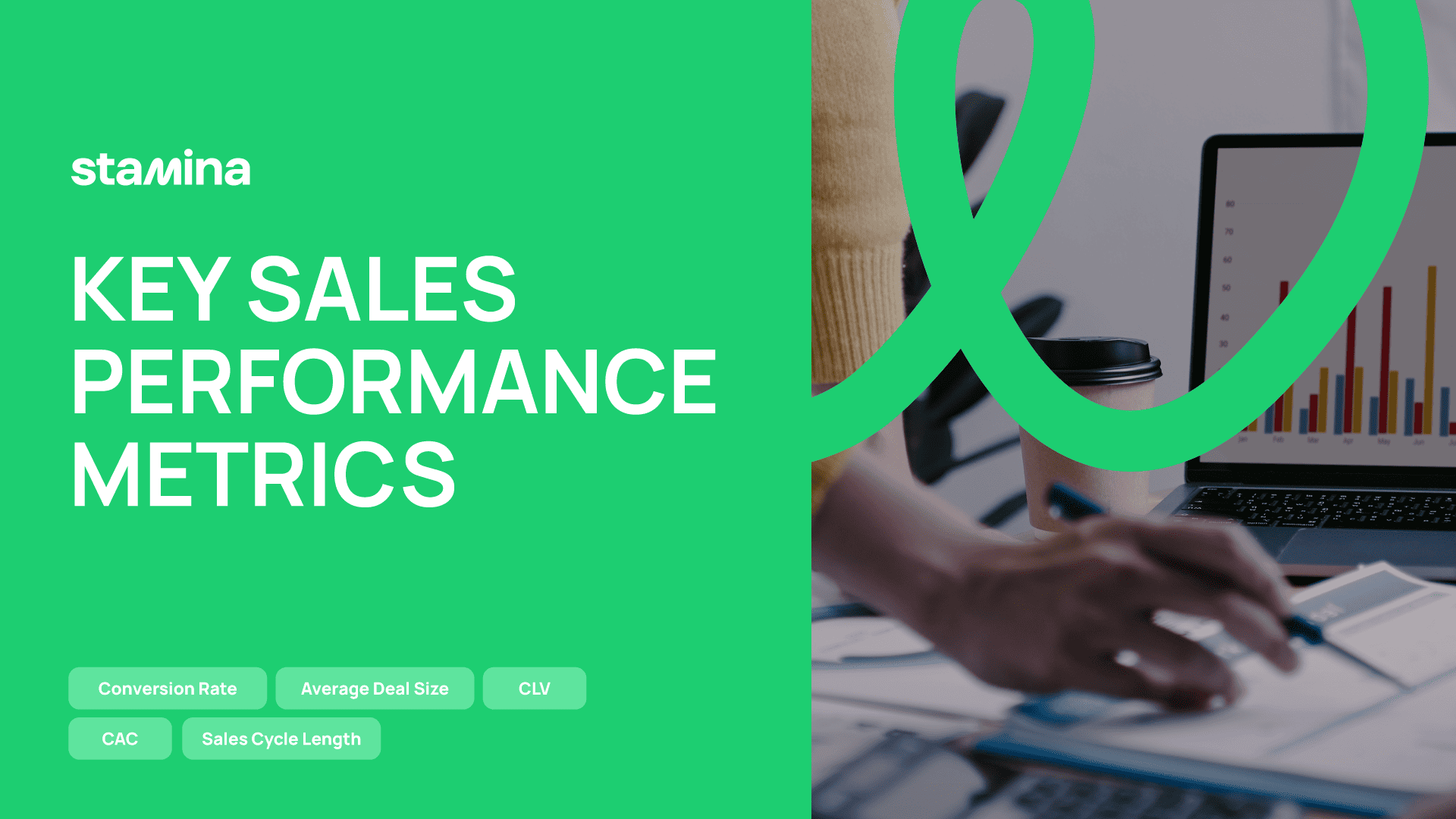Key Sales Performance Metrics and How to Measure Them

“You can’t manage what you don’t measure” may be an old cliché, but it remains relevant for businesses seeking to make data-driven and informed decisions.
Without identifying and measuring key performance indicators, it can be difficult for businesses to pinpoint areas for improvement and achieve stable growth.
What Are Sales Metrics?
Sales metrics are data points evaluating the performance of an organization's sales team and individual sales representatives. Generally, sales metrics are used to set goals, identify gaps, structure performance incentives, and calculate payouts and bonuses.
Lagging and leading sales indicators are distinguished. Lagging sales indicators display the accomplishments of salespeople. Leading sales indicators display what the sales representatives need to achieve based on their ongoing actions.
Lagging sales indicators encompass total revenue or sales by lead source. The leading indicators include the total emails sent or phone calls made, and similar.
By merging both sales indicators, you can make predictions regarding the future of your sales processes.
Why Are Sales Performance Metrics Important?
Sales metrics are key for determining whether you spend enough time on the right sales activities and if they pay off. In other words, sales metrics reveal the strengths and weaknesses of your sales activities, help set and track goals, improve decision-making, and optimize sales strategies.
When a sales metric is essential for your sales objectives, it transforms into a key performance indicator (KPI).
To gain a comprehensive view of your sales efficiency, consider various sales metrics. For instance, tracking only sales activities without evaluating their outcomes won’t allow you to assess their effectiveness.
Top Sales Performance Metrics
As mentioned above, you need to measure a combination of sales metrics to have a comprehensive view of your sales activity efficiency. You may ask what the ideal metrics are to measure.
Well, there is no one-size-fits-all answer to this question. The best sales metrics to monitor depend on different factors such as the industry, the performance targets, the organization of the company, and similar factors.
Still, most organizations share similar goals. With this in mind, we have compiled the top 5 sales metrics to measure.
Conversion Rate
Conversion rate assesses how effectively your sales team converts leads into customers. It is an important key sales metric for both marketing and sales.
The basic formula used for calculating the sales conversion rate is:
Conversion Rate = (Total Number of Leads Converted Into Sales ÷ Total Number of Leads) x 100
To have more granular results, you can calculate conversion rates based on customer segmentation, the campaign channel, the campaign type, etc.
Average Deal Size
Average deal size demonstrates the typical revenue generated per deal. Measuring this metric can help you determine the effectiveness of your sales strategy, pricing, and customer acquisition tactics.
Average Deal Size = Total Revenue from Deals ÷ Number of Closed Deals
Sales Cycle Length
How long does your sales team or salesperson take to convert leads into new customers? It is generally preferable to have a shorter sales cycle, as it brings efficiency and faster revenue generation. However, let’s recognize that sales cycle lengths can vary depending on many different factors such as the field, the product ,and customer type.
To determine the time it takes to convert an unqualified lead into a customer, follow this approach:
Sales Cycle Length = Total Number of Days for All Deals ÷ Total Number of Deals
Customer Acquisition Cost (CAC)
Customer Acquisition Cost (CAC) estimates how much a company spends on acquiring new customers. It is a key sales and marketing metric signifying the total cost of sales and marketing efforts.
A common method for determining whether a company operates efficiently is by analyzing the Customer Acquisition Cost (CAC) together with the Lifetime Value (an estimate of the total revenue generated by a customer throughout their relationship with the brand) or the Monthly Recurring Revenue (a measurement of monthly revenue generation).
The formula for measuring the Customer Acquisition Cost is:
Customer Acquisition Cost = All sales and marketing costs ÷ number of new customers gained within a specific period
Customer Lifetime Value (CLV)
Customer Lifetime Value (CLV) refers to the total revenue a business can expect from a single customer account for the relationship.
CLV helps companies focus on long-term profitability instead of short-term profits.
When you know how much a customer is worth over time, you can make smarter decisions about how much to invest in acquiring and retaining them.
The simplified formula for calculating CLV:
CLV = Average Purchase Value × Purchase Frequency × Customer Lifespan
Measuring CLV helps to:
-
Identify the most valuable customer segments
-
Guide the customer retention strategies.
-
Optimize marketing costs
Tools to Measure Sales Performance Metrics
Measuring sales KPIs (Key Performance Indicators) such as conversion rates, average deal size, sales cycle length, and win/loss ratios can reveal what's working and what’s not in the sales process.
Here are some of the best tools to help with that:
Microsoft Power BI
Power BI is a powerful business analytics tool by Microsoft that helps visualize and share insights from your data.
Why use it for sales:
-
Interactive dashboards and real-time reporting
-
Easy connection with your CRM or Excel files
-
Sales pipeline and revenue trends tracking.
It’s ideal for organizations that want deep insights and customization without the need to code from scratch.
Microsoft Excel / Google Spreadsheets
Still one of the most widely used tools for sales tracking, Excel and Google Sheets offer flexibility and familiarity.
Why do they still work?
-
Quick calculations, custom templates, and reporting
-
Simple collaboration options.
-
Easy to learn
They’re best suited for small teams or startups just getting started with tracking metrics.
Tableau
Tableau is a powerful data visualization tool. It is commonly used for complex analytics and enterprise-level reporting.
Benefits for sales include:
-
Interactive dashboards
-
Large data source connections (with CRMs and data warehouses)
While it has a learning curve, it’s one of the top choices for organizations that need powerful visuals and layered insights.
CRM System
A Customer Relationship Management (CRM) system is the backbone of any sales team’s data strategy.
A CRM system helps your sales team to:
-
Track lead stages, communication, and conversion rates
-
Automate repetitive tasks
-
Create real-time reports on sales performance
CRMs are ideal for aligning sales and marketing efforts to ensure no lead is missed.
Final Thoughts
Understanding and improving your sales performance is a continuous process.
Remember: data isn’t about numbers and making better decisions.
Subscribe to our Newsletter














